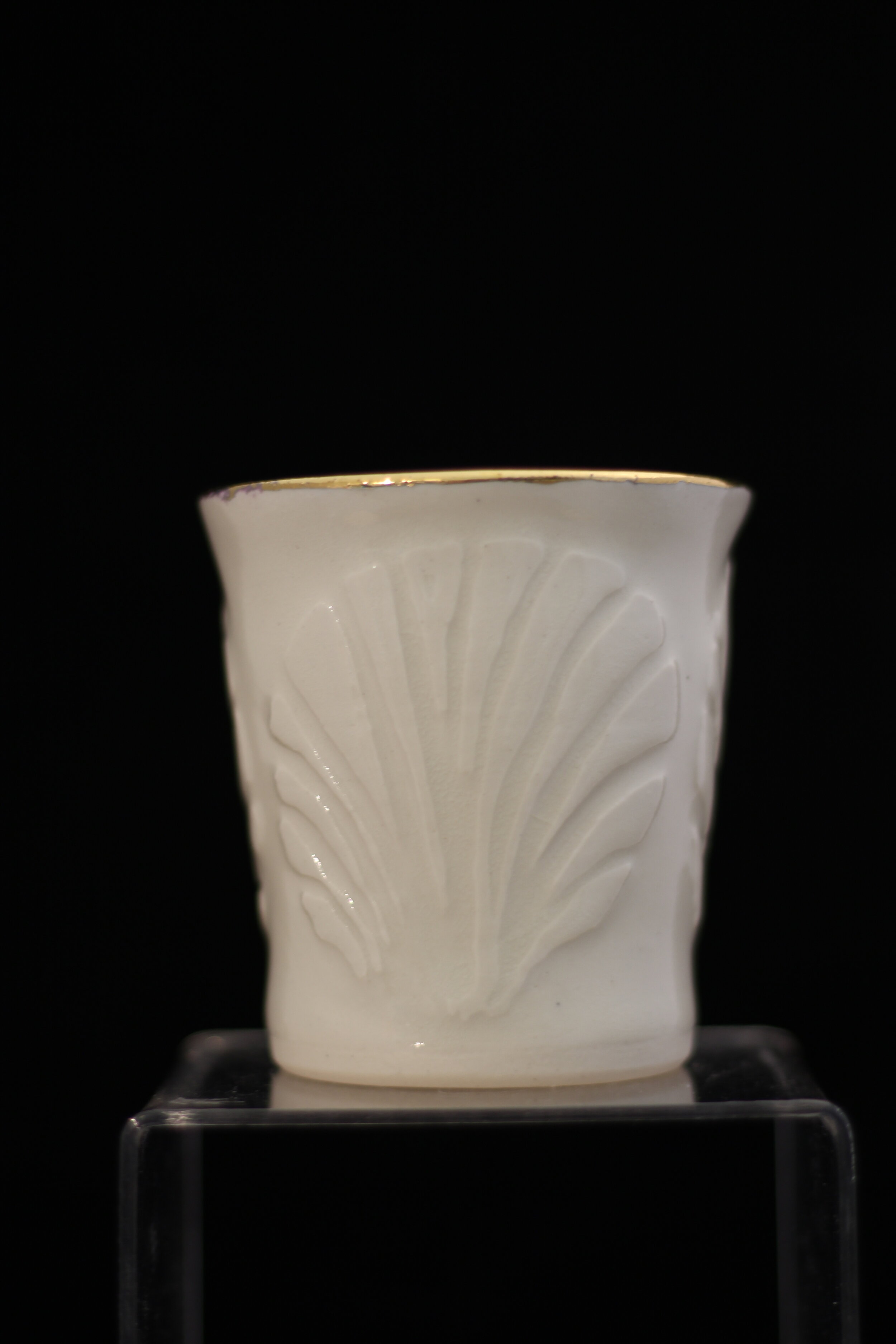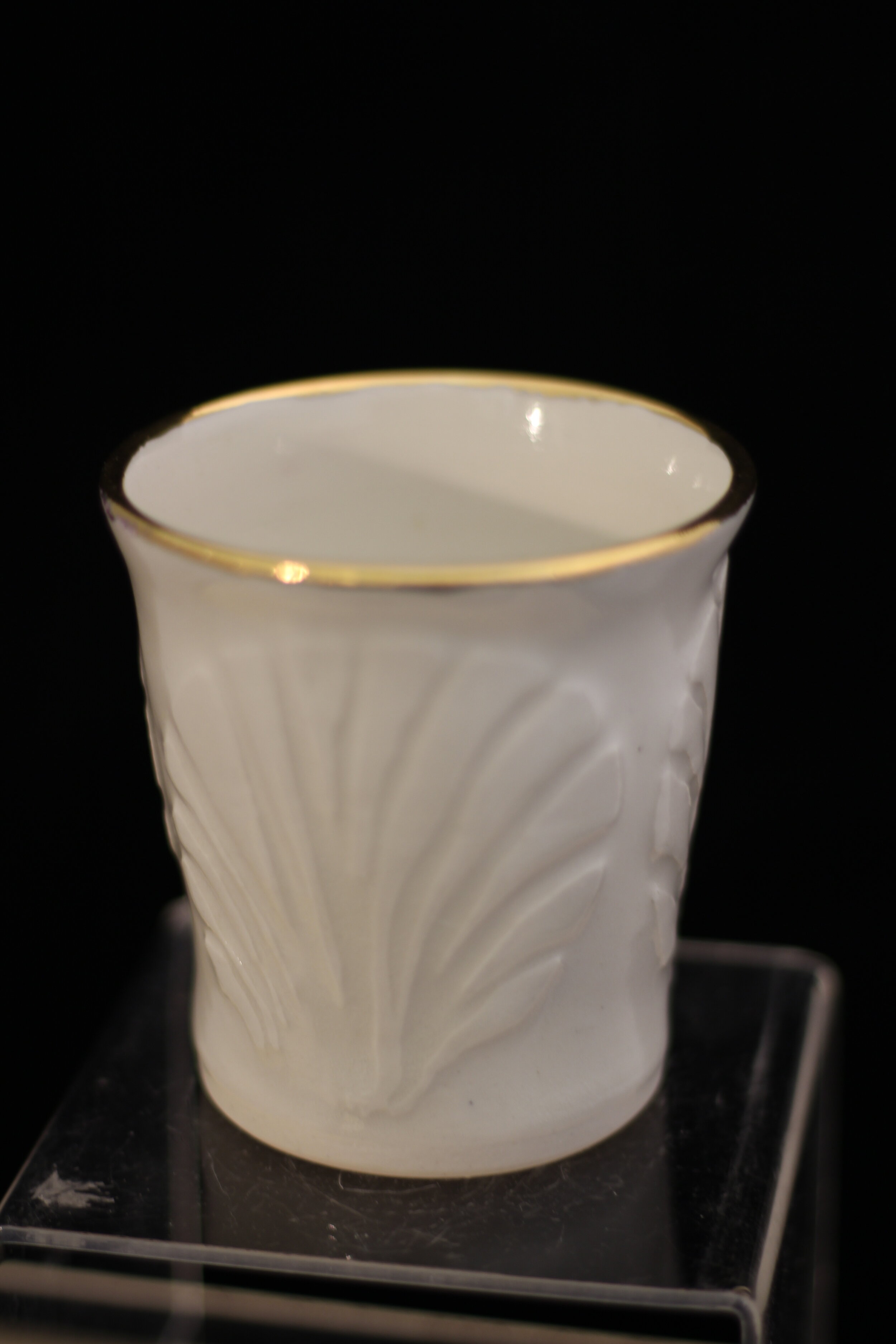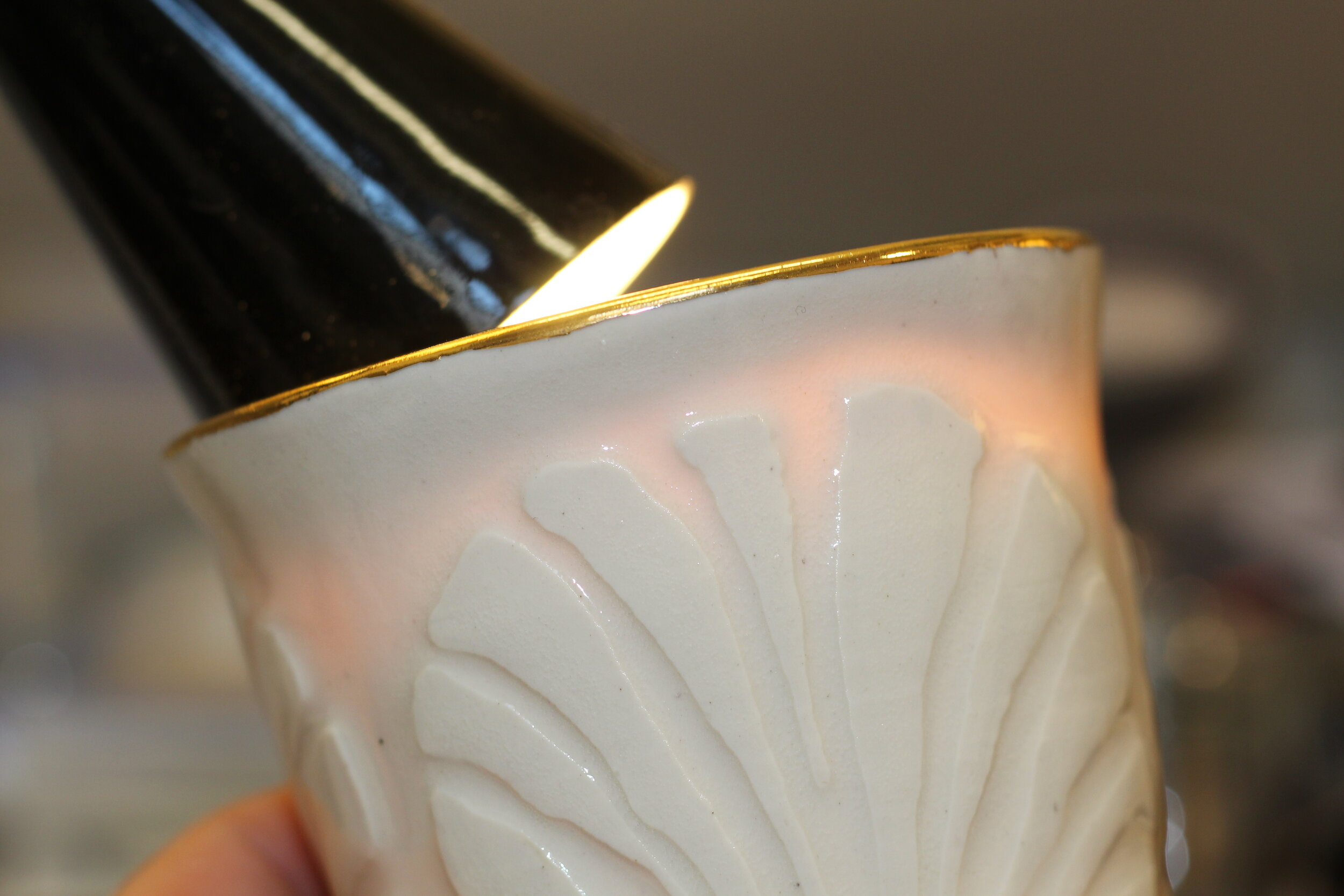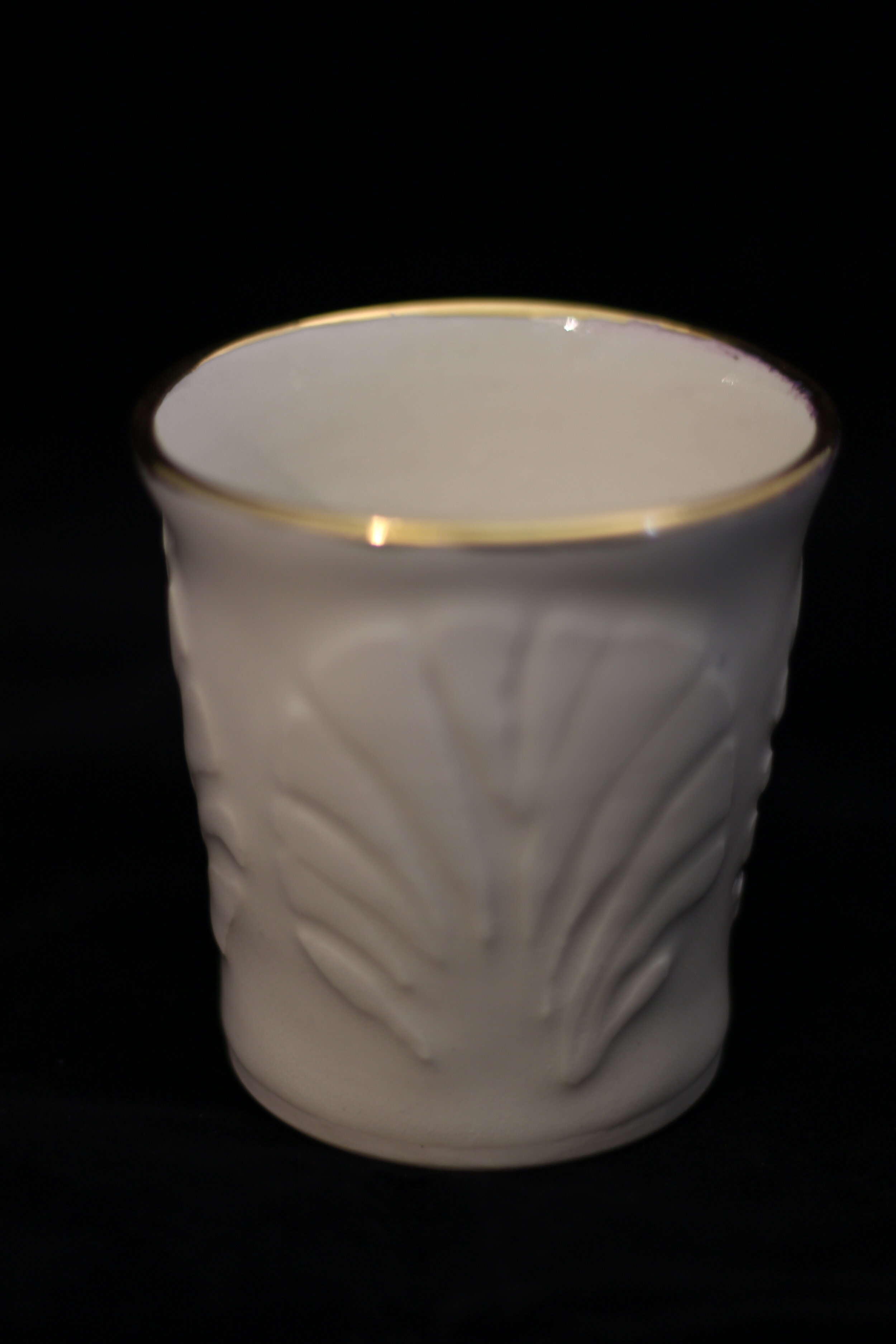 Image 1 of 17
Image 1 of 17

 Image 2 of 17
Image 2 of 17

 Image 3 of 17
Image 3 of 17

 Image 4 of 17
Image 4 of 17

 Image 5 of 17
Image 5 of 17

 Image 6 of 17
Image 6 of 17

 Image 7 of 17
Image 7 of 17

 Image 8 of 17
Image 8 of 17

 Image 9 of 17
Image 9 of 17

 Image 10 of 17
Image 10 of 17

 Image 11 of 17
Image 11 of 17

 Image 12 of 17
Image 12 of 17

 Image 13 of 17
Image 13 of 17

 Image 14 of 17
Image 14 of 17

 Image 15 of 17
Image 15 of 17

 Image 16 of 17
Image 16 of 17

 Image 17 of 17
Image 17 of 17


















Porcelain Shell Beaker
Porcelain Beaker with shell motif decoration and gold rim
Thrown and turned using porcelain clay on the potters wheel
Once dry, the raw clay is ‘eroded’ using an applied resist layer of shellac. Shellac is painted onto the surface to create the shell design in negative. Once the shellac has hardened, a wet natural sponge is used to erode the exposed porcelain, leaving the areas with the shellac untouched. The erosion process makes the porcelain thinner and hence more able to be translucent when finally fired.
A transparent glaze has been applied to interior and exterior
Fired in an electric kiln to 1260 degrees centigrade
A bright gold lustre has been applied to the rim and this has been fired on during a third firing to 800 degrees centigrade
Height: 90 mm Diameter: 96 mm
Porcelain Beaker with shell motif decoration and gold rim
Thrown and turned using porcelain clay on the potters wheel
Once dry, the raw clay is ‘eroded’ using an applied resist layer of shellac. Shellac is painted onto the surface to create the shell design in negative. Once the shellac has hardened, a wet natural sponge is used to erode the exposed porcelain, leaving the areas with the shellac untouched. The erosion process makes the porcelain thinner and hence more able to be translucent when finally fired.
A transparent glaze has been applied to interior and exterior
Fired in an electric kiln to 1260 degrees centigrade
A bright gold lustre has been applied to the rim and this has been fired on during a third firing to 800 degrees centigrade
Height: 90 mm Diameter: 96 mm